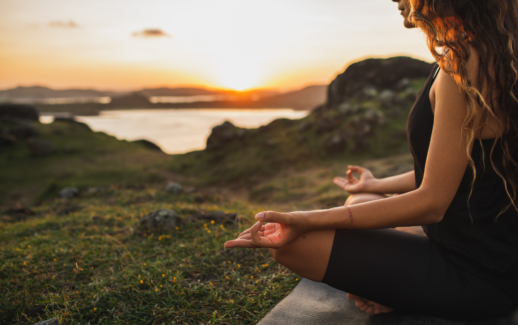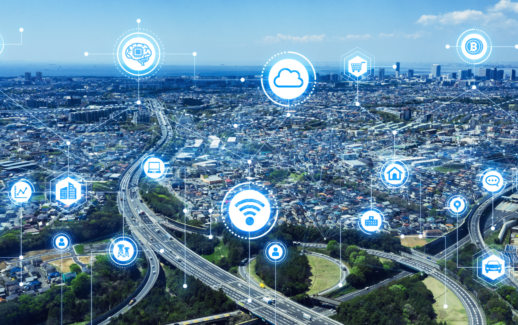Since 9/11 and rise in global terrorism, countries around the globe have spent vast sums of time and money protecting their economies from natural and manmade disasters. Over the past 2 decades, Disaster Readiness and Business Continuity Planning has become an essential part of most technology and management training courses. Most medium to large businesses have a senior member of staff whose job is to ensure the business could continue to function in case of a disaster. With that and the ‘Nuclear Umbrella’ which the NATO (North Atlantic Treaty Organization) countries have built spending trillions, Western countries thought they were safe. They were – until a tiny and invisible bug called coronavirus struck and caught everyone by surprise. This great leveller did not appear to discriminate between rich and poor, black and white or male or female. Spreading rapidly from human to human, it showed no interest in household pets. To make matters worse, for reasons so far unexplained, some people could get the virus and carry it without showing any ill-effects; and without even knowing, pass it on to others for whom it could prove fatal.
Reaction to the pandemic
COVID-19 highlighted human vulnerability and brought us face-to-face with our own mortality. As a new disease, humans did not have immunity to coronavirus. Social distancing was adapted as the only available weapon to control its spread. Transport systems ground to a halt, planes grounded, factories and schools shut, governments ordered people to stay home for their own safety and not to spread the disease. ‘Stay home, protet the NHS and save lives’ was the UK government’s slogan. Fear of death took over as if an invisible gun is held to their heads, reason gave way to panic and people began to behave irrationally. Some resorted to panic buying and hoarding, as though stocks could protect them. Corona pandemic brought to surface the different faces of humanity when under pressure, for all to see. There were amazing outpourings of human kindness, selflessness and generosity, people looking out for their neighbours – caring, and sharing as well as instances of selfish greed and opportunism.
World before the pandemic
World by no means was not a perfect place before the pandemic. However, due to seven and half decades of peace since the World War 2 there was stability. This had resulted in unprecedented growth and prosperity, fuelled by science, technology, breakthroughs in medicine and industrialisation. Millions of people have been lifted out of poverty, yet the gap between rich and poor has widened at the same time. There have been many disasters during this period, some natural, such as floods, earthquakes and fires, and others manmade, such as terrorism, refugee crises, drug and human trafficking – but nothing in the scale of the corona pandemic.
Why it happened
Due to the breakthroughs in medicine and nutrition, human population has grown from a little over 1 billion 200 years ago, to 7.9billion by 2019 leading to a population explosion and an overcrowded planet. Effects of industrial pollution such as CO2 emissions leading to global warming are well known but disputed as false and alarmist by some. Unrelenting and industrial-scale exploitation of nature’s resources has resulted in deforestation, human- animal conflict as well as zoonotic diseases such as COVID-19.
Pandemics compared
Epidemics are not new; they are as old as humanity. There are records of epidemics going back several thousand years. Before the age of science and modern medicine, people were in mortal fear of epidemics because they killed or maimed large numbers of people and have even made some civilisations extinct. However, devastating the, epidemics were in the past, they were limited to a smaller area – one village, one tribe or one nation at the most. Now, with the age of globalisation, where people and goods flow across the planet to its remotest corners, often by air, epidemics have also broken geographical boundaries and become global – thereby being called pandemics. The 1918 H1N1 flu pandemic, known as the “Spanish flu,” had killed an estimated 50 million people worldwide. So far, the corona pandemic has claimed a little over half a million people, and that too in a much more densely populated world – due to the advances in science and medicine. Also, starvation and isolation have been less severe, and some semblance of normality has prevailed due to better information and communication technology.
Has the COVID-19 changed the world?
In little over 100 days corona virus has already changed the world. Some sectors have been hit very hard, such as travel, tourism, hospitality, events, retail, and leisure, while others continue with little or no impact, such as agriculture, farming, and transport. Still others have benefitted and grown as a result, such as healthcare, biotech, pharmaceuticals, protective equipment manufacture, technology, and online retailers. It has also changed people’s lifestyles, the way people live – shop, dine, socialise, entertain, and learn. People travel and commute less, stay home or local, eat in, work from home, get their shopping delivered.
Some businesses sectors might not recover at all due to economic downturn, people’s reduced disposable income, change in habits and lifestyles as well as new ways of doing things – such as working and shopping people have discovered during lockdown. In a way COVID-19 has already changed the world and going by what I have seen, some of these changes are here to stay!
Will the COVID change the world?
Although 9/11 and the Boxing Day Tsunami were major disasters, they were limited to a local area. Corona pandemic, however, is a disruptor of global proportions, in the same league as World War1, Spanish Flu and World War 2. Disrupters disrupt – they force change, often on people who are reluctant and resist change. However, global disruptors such as pandemics are so big and forceful people have no choice but to adapt, their only choice is sink or swim.
World War 1 ended the use of horses in warfare and replaced them with tanks and aeroplanes which determined the outcome of future wars. End of WW2 saw the former allies turning bitter enemies and the start of Cold War and uneasy peace. The Cold War among other things, gave birth to the internet as a nuclear-proof communication channel which has been powering the 4th Industrial Revolution, and served the world as a lifeline during the corona lockdown.
The immediate priority for the governments is to halt the downward economic spiral and prevent the recession turning into a prolonged depression as it happened during 1930s after the WW1 and Spanish Flu.
As a result of the pandemic, some industries and sectors will disappear altogether through no fault of their own, while others will fail, because of their failure to read the writings on the wall and take necessary action.
Once the fear of the pandemic has receded and the economy has ‘cleansed itself’ and recovered from its initial shock, it will bounce back, bigger, and stronger with a new outlook, tools, and services.
Lessons can from corona pandemic
- We are in this together – whether we like it or not, the human race is bound together by an invisible thread.
- Zero sum win-lose games are short-sighted. One part of humanity cannot continue to exploit the rest of the humanity, or the planet and expect to get away with it. They will come back to bite you when you least expect it as the coronavirus has done.
- Humanity is at its best when it is united, care for one another and be fair to each other – as we have seen during the height of the pandemic. Only then is true global peace and prosperity possible.
- Globalization provides huge gains, especially to the rich and powerful. It comes with many hidden costs and often borne by the poor and vulnerable. Therefore, staying local and connecting global would be a better way forward for a happier and healthier planet.
- Coronavirus forced the humanity to connect and communicate with one another in new and creative ways aided by technology. It has shown what amazing feats humans can achieve when they unite as one race.

